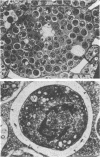Abstract
Rhizobium strain BTAi 1, which nodulates both stems and roots of Aeschynomene indica L., formed bacteriochlorophyll and photosynthetic reaction centers resembling those of purple photosynthetic bacteria when grown aerobically ex planta under a light-dark cycle. Bacteriochlorophyll formation was not observed under continuous dark or light growth conditions. The amount of pigment formed was similar to that previously found in aerobic photosynthetic bacteria. Stem nodules appear to fix nitrogen photosynthetically, as illumination of A. indica stem nodules with near-infrared light resulted in an enhanced rate of acetylene reduction. Near-infrared light did not enhance acetylene reduction when either A. indica or soybean root nodules were illuminated. The BTAi 1 isolate can be differentiated from members of the family Rhodospirillaceae by several criteria.
Full text
PDF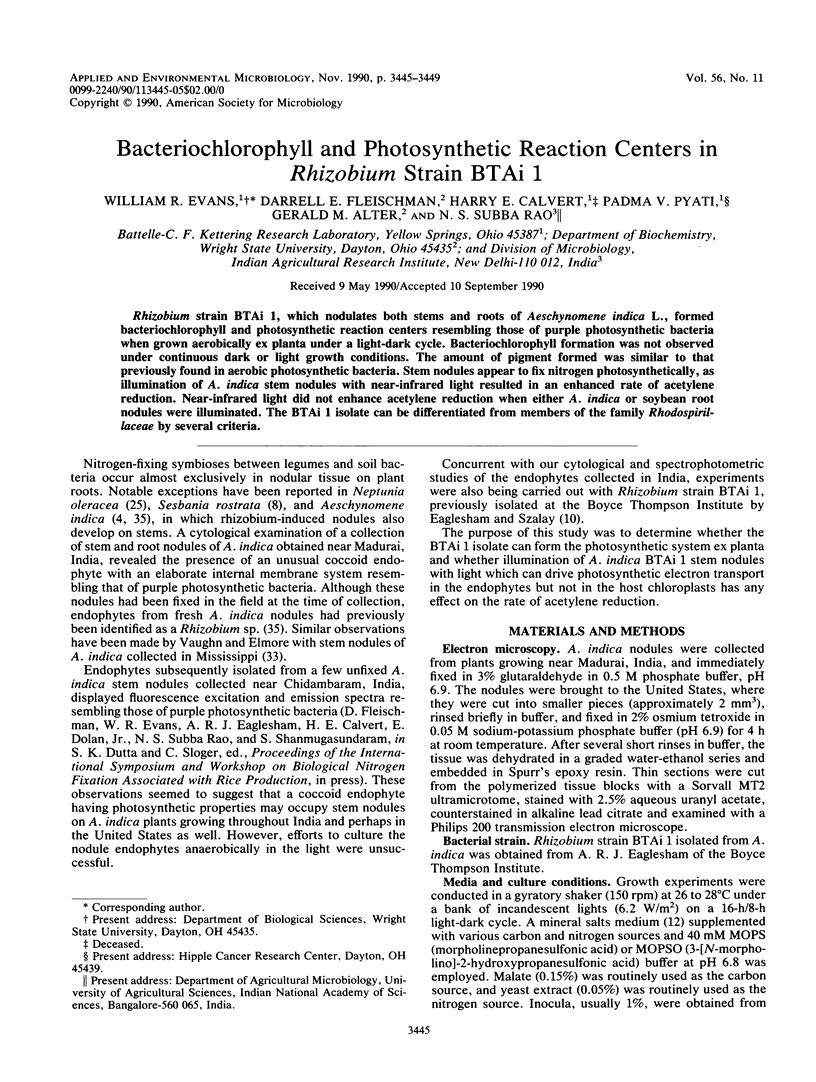
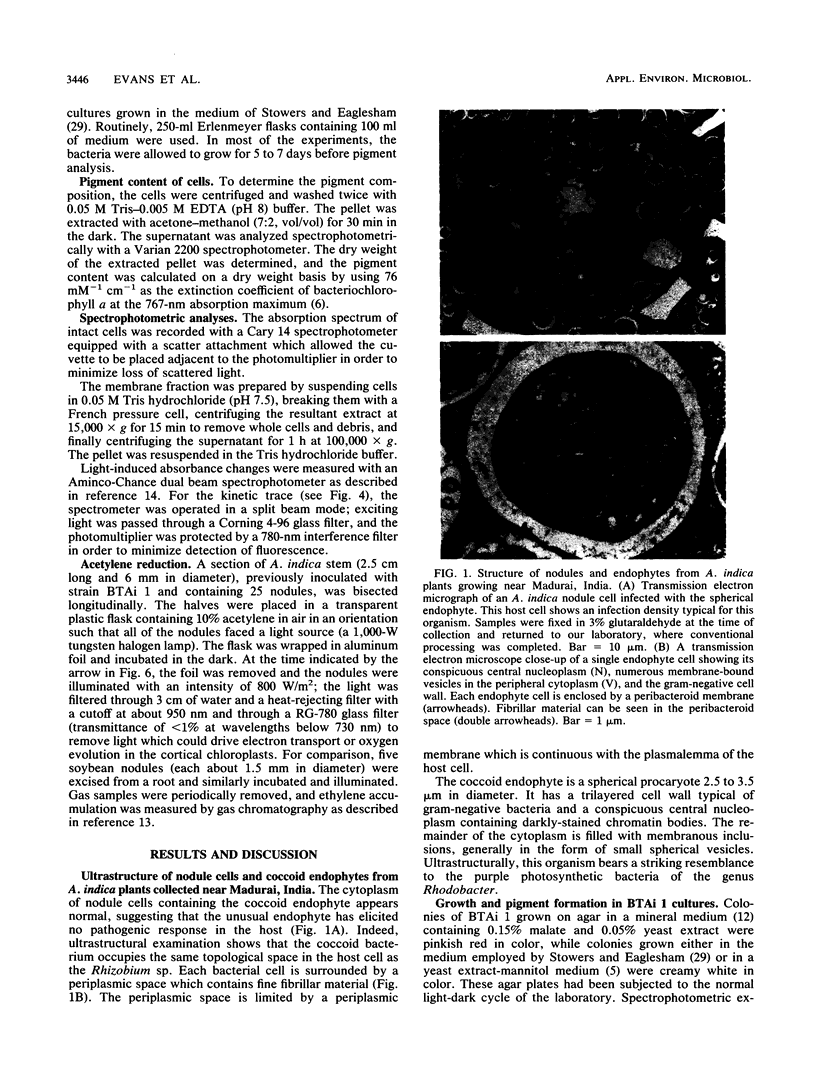
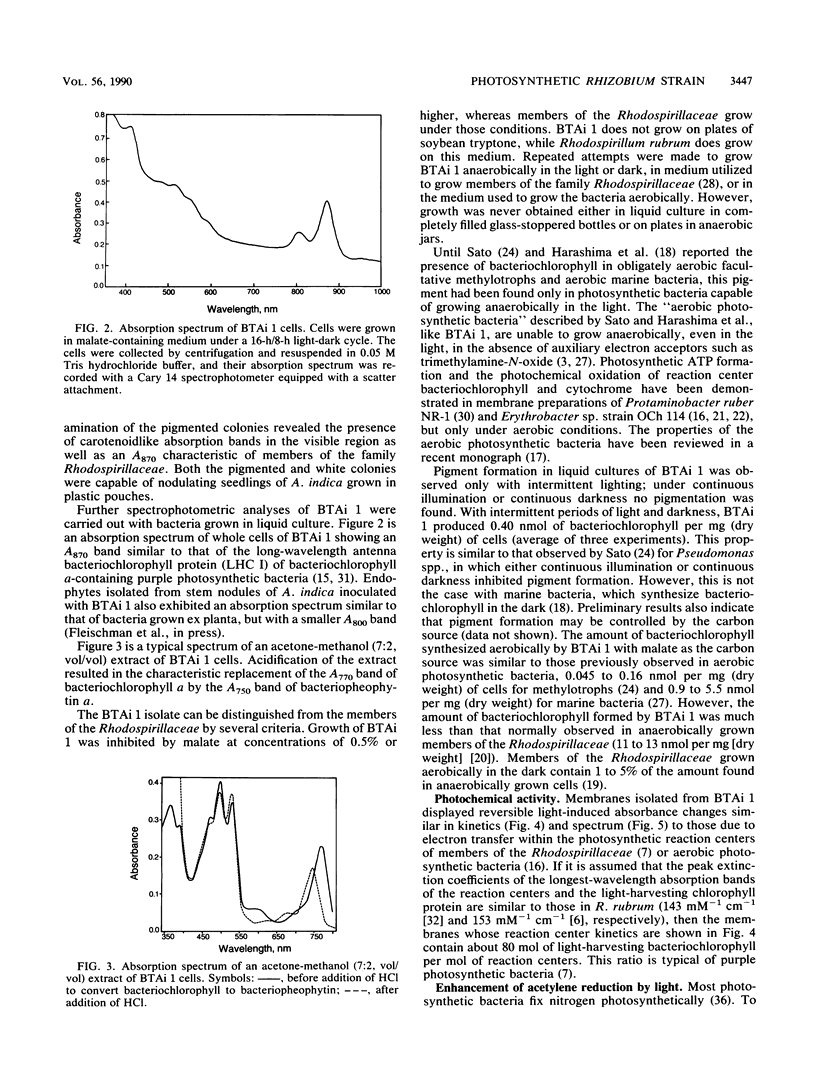
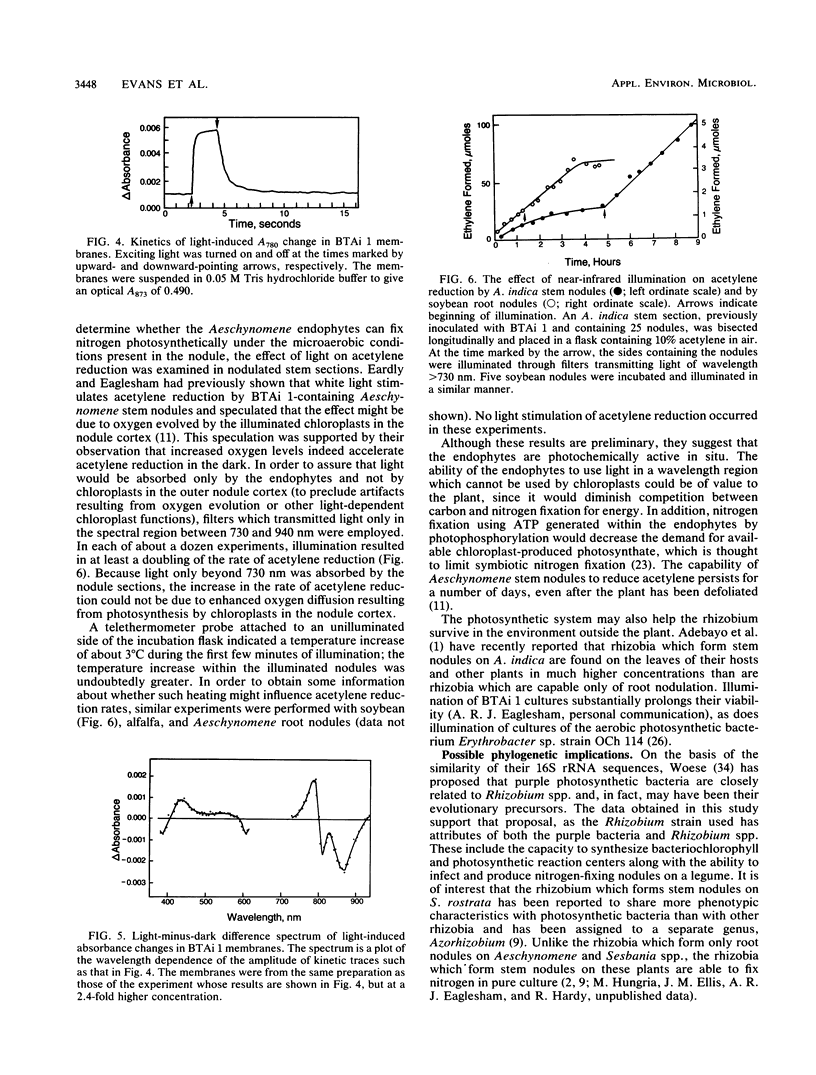
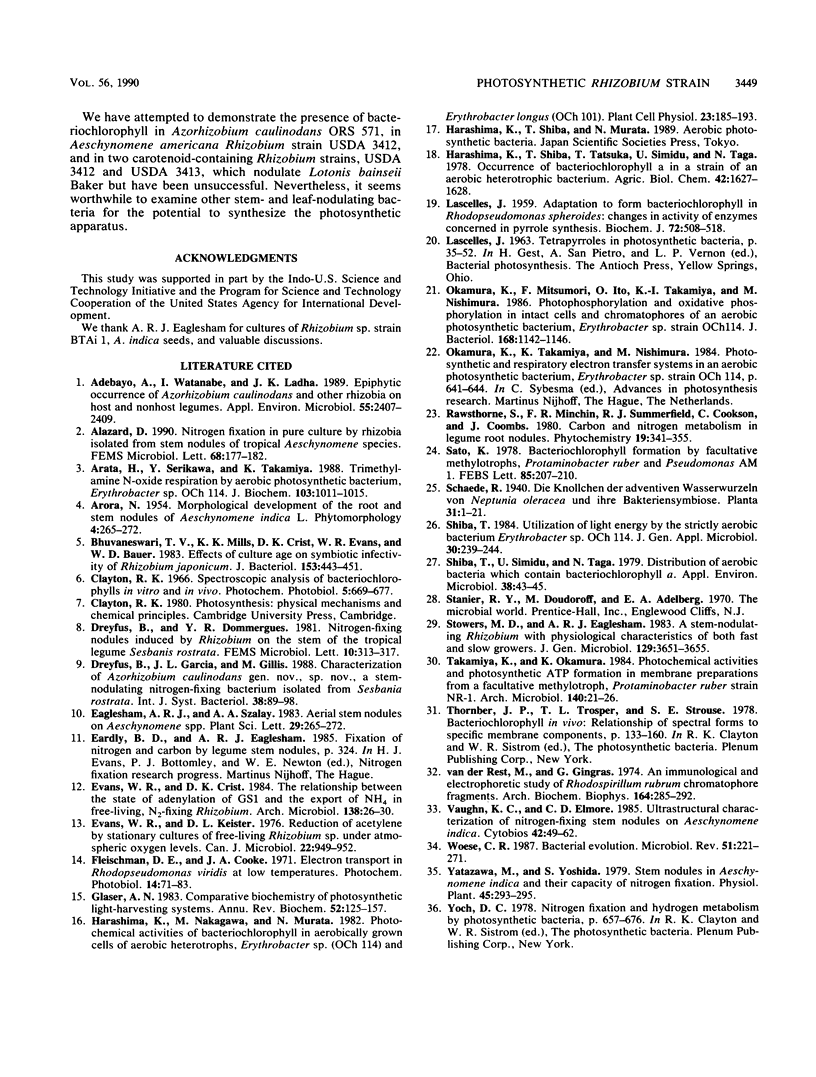
Images in this article
Selected References
These references are in PubMed. This may not be the complete list of references from this article.
- Adebayo A., Watanabe I., Ladha J. K. Epiphytic Occurrence of Azorhizobium caulinodans and Other Rhizobia on Host and Nonhost Legumes. Appl Environ Microbiol. 1989 Sep;55(9):2407–2409. doi: 10.1128/aem.55.9.2407-2409.1989. [DOI] [PMC free article] [PubMed] [Google Scholar]
- Arata H., Serikawa Y., Takamiya K. Trimethylamine N-oxide respiration by aerobic photosynthetic bacterium, Erythrobacter sp. OCh 114. J Biochem. 1988 Jun;103(6):1011–1015. doi: 10.1093/oxfordjournals.jbchem.a122371. [DOI] [PubMed] [Google Scholar]
- Bhuvaneswari T. V., Mills K. K., Crist D. K., Evans W. R., Bauer W. D. Effects of culture age on symbiotic infectivity of Rhizobium japonicum. J Bacteriol. 1983 Jan;153(1):443–451. doi: 10.1128/jb.153.1.443-451.1983. [DOI] [PMC free article] [PubMed] [Google Scholar]
- Evans W. R., Keister D. L. Reduction of acetylene by stationary cultures of free-living Rhizobium sp. under atmospheric oxygen levels. Can J Microbiol. 1976 Jul;22(7):949–952. doi: 10.1139/m76-137. [DOI] [PubMed] [Google Scholar]
- Glazer A. N. Comparative biochemistry of photosynthetic light-harvesting systems. Annu Rev Biochem. 1983;52:125–157. doi: 10.1146/annurev.bi.52.070183.001013. [DOI] [PubMed] [Google Scholar]
- LASCELLES J. Adaptation to form bacteriochlorophyll in Rhodopseudomonas spheroides: changes in activity of enzymes concerned in pyrrole synthesis. Biochem J. 1959 Jul;72:508–518. doi: 10.1042/bj0720508. [DOI] [PMC free article] [PubMed] [Google Scholar]
- Okamura K., Mitsumori F., Ito O., Takamiya K., Nishimura M. Photophosphorylation and oxidative phosphorylation in intact cells and chromatophores of an aerobic photosynthetic bacterium, Erythrobacter sp. strain OCh114. J Bacteriol. 1986 Dec;168(3):1142–1146. doi: 10.1128/jb.168.3.1142-1146.1986. [DOI] [PMC free article] [PubMed] [Google Scholar]
- Sato K. Bacteriochlorophyll formation by facultative methylotrophs, Protaminobacter ruber and Pseudomonas AM 1. FEBS Lett. 1978 Jan 15;85(2):207–210. doi: 10.1016/0014-5793(78)80456-6. [DOI] [PubMed] [Google Scholar]
- Shiba T., Simidu U., Taga N. Distribution of aerobic bacteria which contain bacteriochlorophyll a. Appl Environ Microbiol. 1979 Jul;38(1):43–45. doi: 10.1128/aem.38.1.43-45.1979. [DOI] [PMC free article] [PubMed] [Google Scholar]
- Woese C. R. Bacterial evolution. Microbiol Rev. 1987 Jun;51(2):221–271. doi: 10.1128/mr.51.2.221-271.1987. [DOI] [PMC free article] [PubMed] [Google Scholar]
- van der Rest M., Noël H., Gingras G. An immunological and electrophoretic study of Rhodospirillum rubrum chromatophore fragments. Arch Biochem Biophys. 1974 Sep;164(1):285–292. doi: 10.1016/0003-9861(74)90033-2. [DOI] [PubMed] [Google Scholar]



